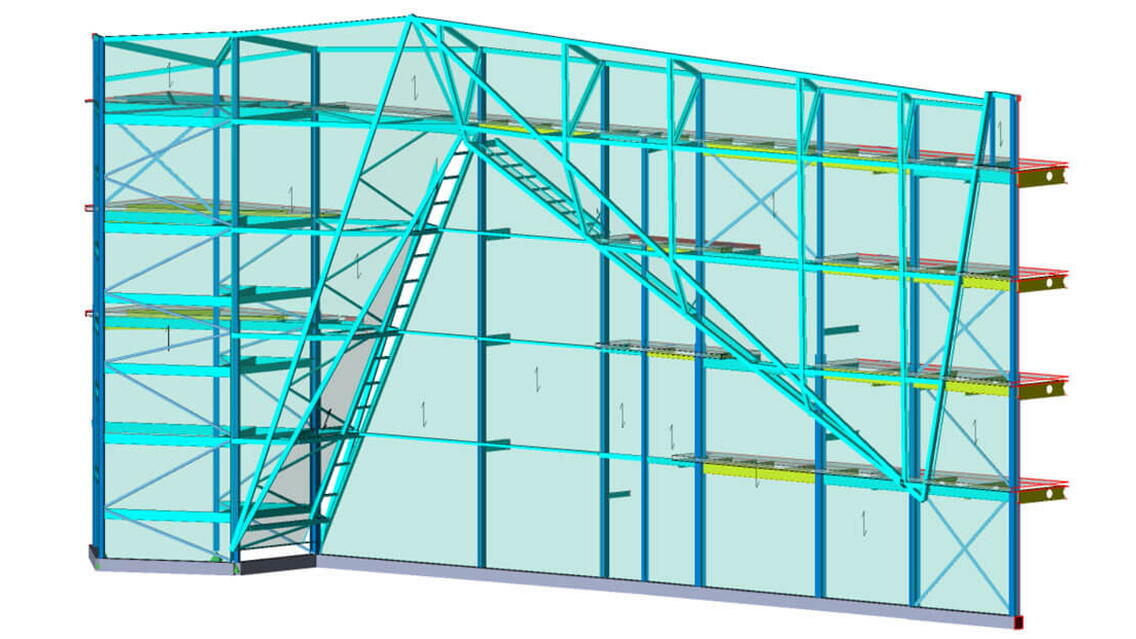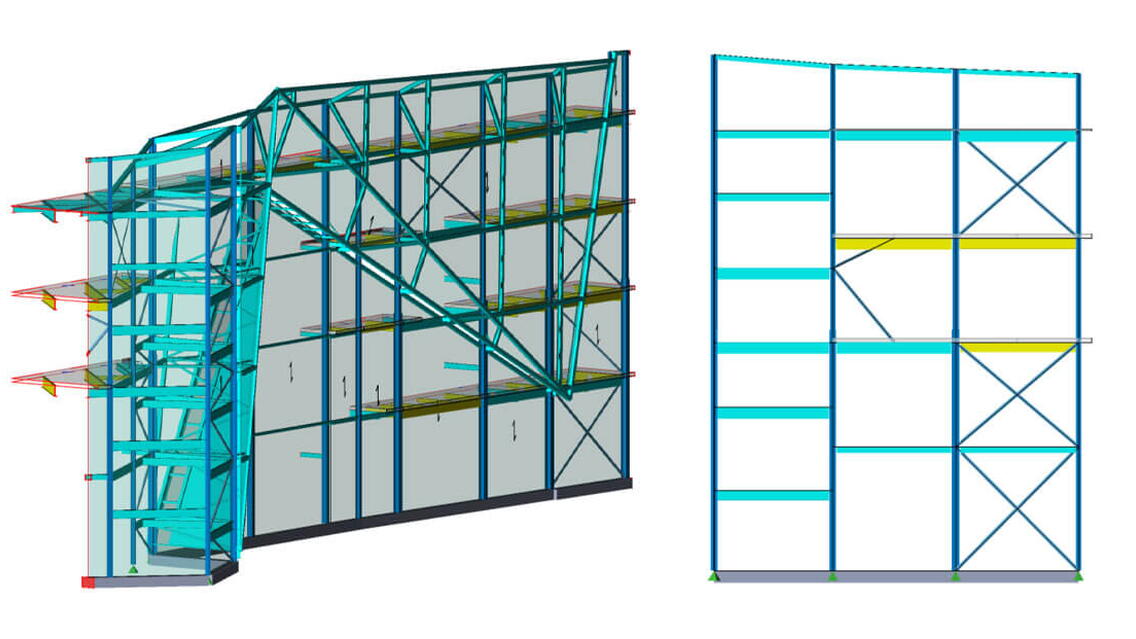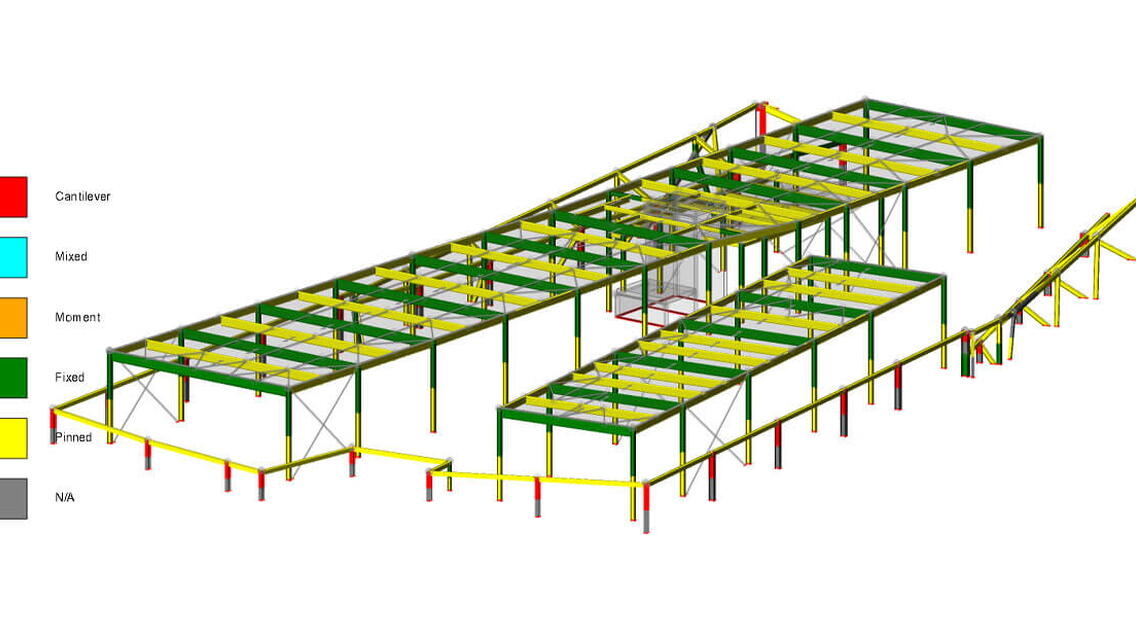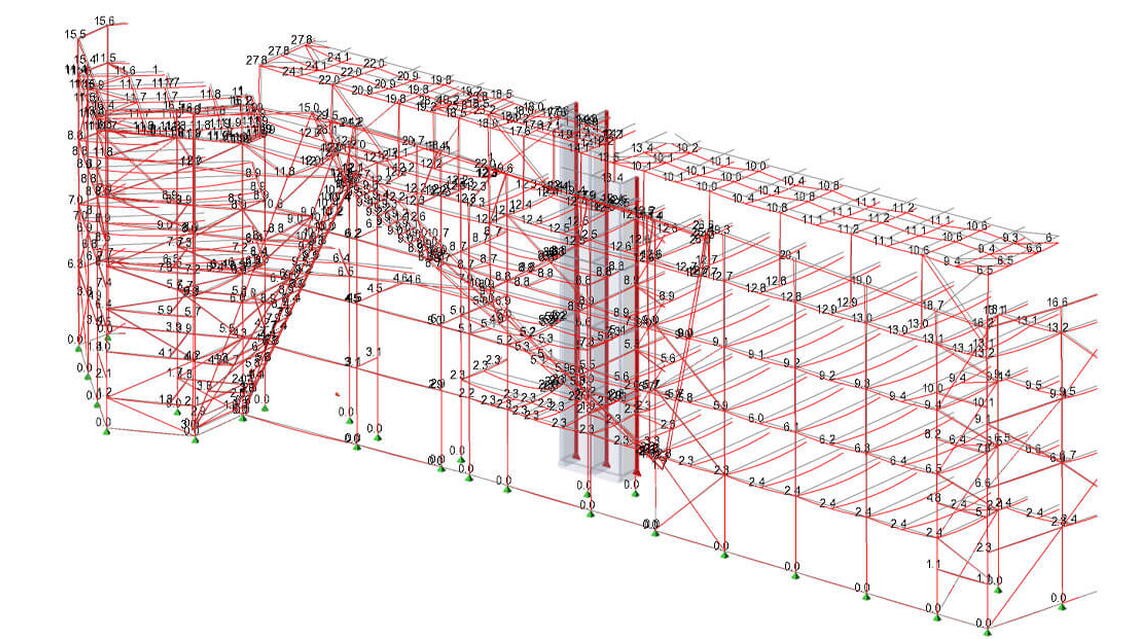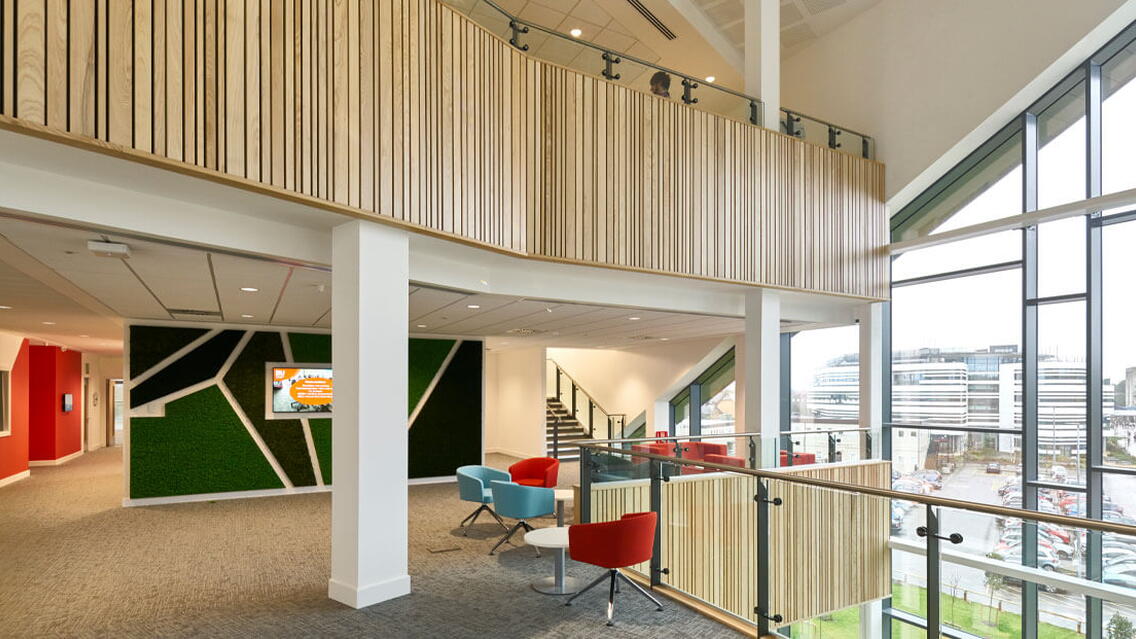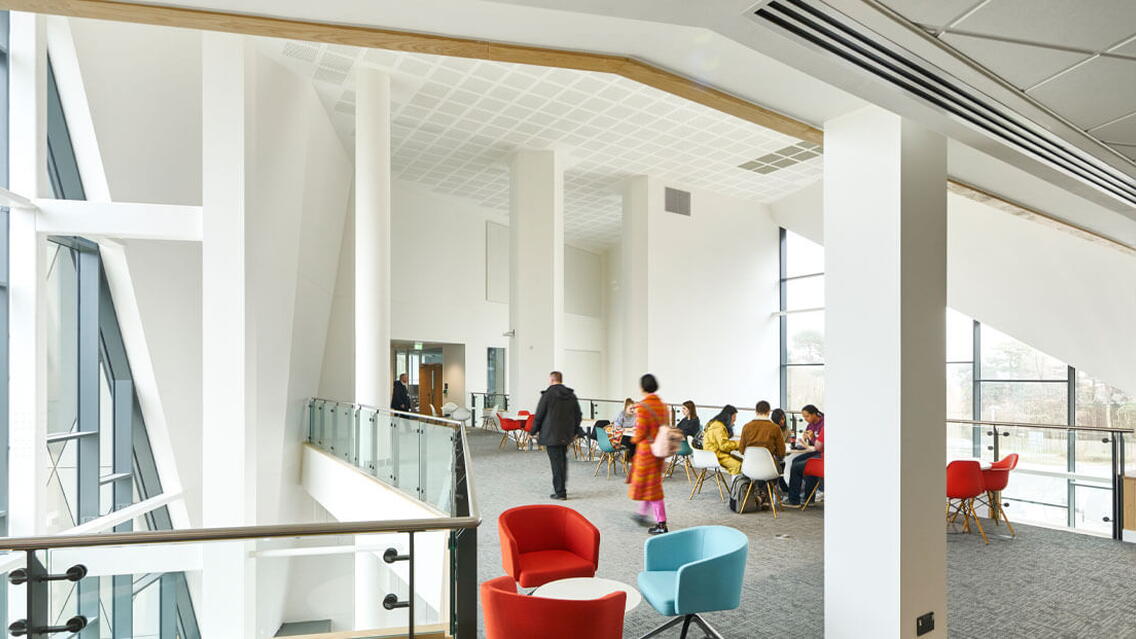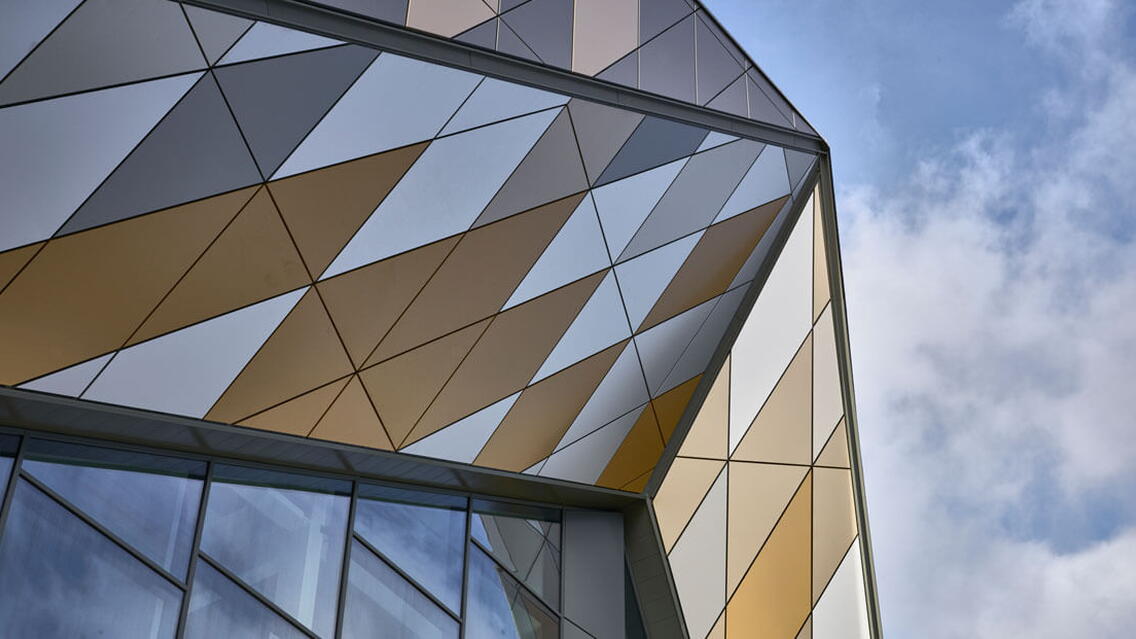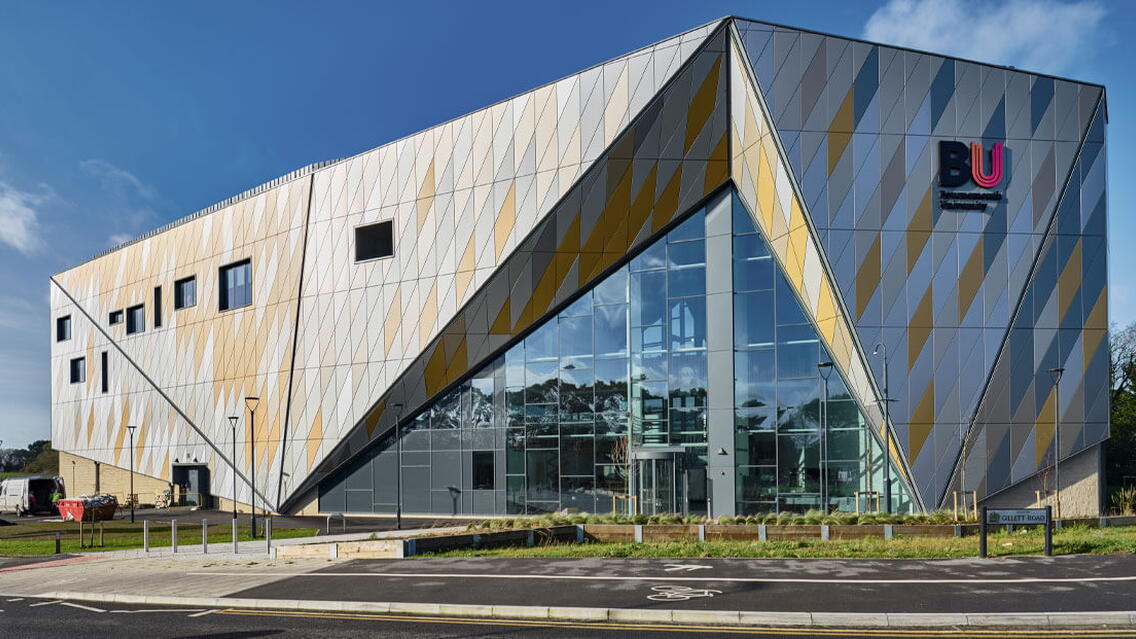Poole Gateway Building is a new academic building situated on the eastern edge of Bournemouth University’s Talbot Campus and is part of the Faculty of Science & Technology and Faculty of Media & Communication.
It has two primary functions; to provide:
- A visual ‘gateway’ into the campus which acts as a clear point of entry and welcomes students onto the University campus.
- A mixture of flexible teaching space, TV studios, a sound stage, music studios, cinema, edit & sound suites, green screen & motion capture studios, and recording studios to be used graduates and undergraduates for research and teaching.
The four storey building is characterised by a visual ‘gateway’; an arched three-dimensional aluminium rain-screen cladding system that frames the view through the heart of the building to the campus beyond.
The University’s strategic carbon reduction programme was a key project driver in the incorporation of zero and low carbon building servicing systems. This enabled the project to achieve an Energy Performance Certificate (EPC) rating of A, and a BREEAM ‘Excellent’ rating by considering the CO2 embodied within the fabric and structure.
What were the challenges and what made the project successful?
The main challenge on this project was creating the three dimensional ‘gateway’ concept within a budget acceptable to the client. In the early design stages this project was considerably over budget and underwent an extensive value engineering exercise to bring it within the cost constraints agreed with the university. The value engineering exercise was challenging as the useable floor area had to be maintained, and as the new ‘gateway’ to the Talbot campus the Client did not want to compromise on quality, or external aesthetics. The result was a reduction in the gross internal area (whilst maintaining the net useable teaching space), thus improving the ‘net-to-gross area’ ratio making the building more efficient. This was coupled with changes to the thermal envelope and reconfiguration of the building footprint. The collaboration between all parties within the design team was paramount to achieving this success.
Coordination between the structure and services was another challenge on this project which included the coordination of web openings, the zone underneath steel beams, and the positioning of primary/secondary beams so that larger services could run parallel without obstruction. The main constraint was the need to keep the structural and services zone to less than 800mm so void detection would not be required. The use of Tekla Structural Designer on this project helped us to quickly and efficiently develop various structural options during the coordination process, to assess the benefits of switching beam types and span directions.
During the construction stage the main contractor requested a change to the staircase construction from steel to precast concrete. With a limited time-frame to assess this and update our drawings before impacting on programme this was challenging. Having used Tekla Structural Designer on this project, we were able to account for the extra load and change in half landing span directions relatively quickly, which we then used to check our foundation and steel element sizes. The benefit in this case was efficiency – we were able to update our design and our drawings within a week rather than what could have been several weeks.
What benefits did utilizing BIM and Tekla software bring to the project?
The most important benefit that BIM and Tekla brought to this project was that it would not have been possible to do without them because of the complexity the 3D ‘gateway’. The architect provided us with 3D geometry which we used to position our steelwork. Our structural model was then used by the steel fabricator to produce the fabrication model. The BIM environment eliminated the requirement to provide 2D setting out information, and was used throughout the review process, specifically during review of steel fabrication information.
The thing we’re most proud of about the project is being able to say how well the project went in its entirety. From conception to completion the design team worked together with a shared common goal, all of us aspiring to work in collaboration with one another and to see the project delivered on time and budget. The feedback we’ve received from the University and given to each other, has been fantastic and we feel proud to have been a part of it.
The project in numbers
- Project value = £22m
- Construction Cost = £19.8m
- Steel tonnage = 550 tonnes
- Concrete cubic metres = 1600m3
- Structural height = 22m
- Structural width = 25m
- Structural length = 75m
- Floor space = 5000m2
- Construction time = 2 years
- Steel piece count = 2300
- Number of precast elements = 75 (beam & block floor); 26 (precast stair units)
- Number of PV panels = 300
